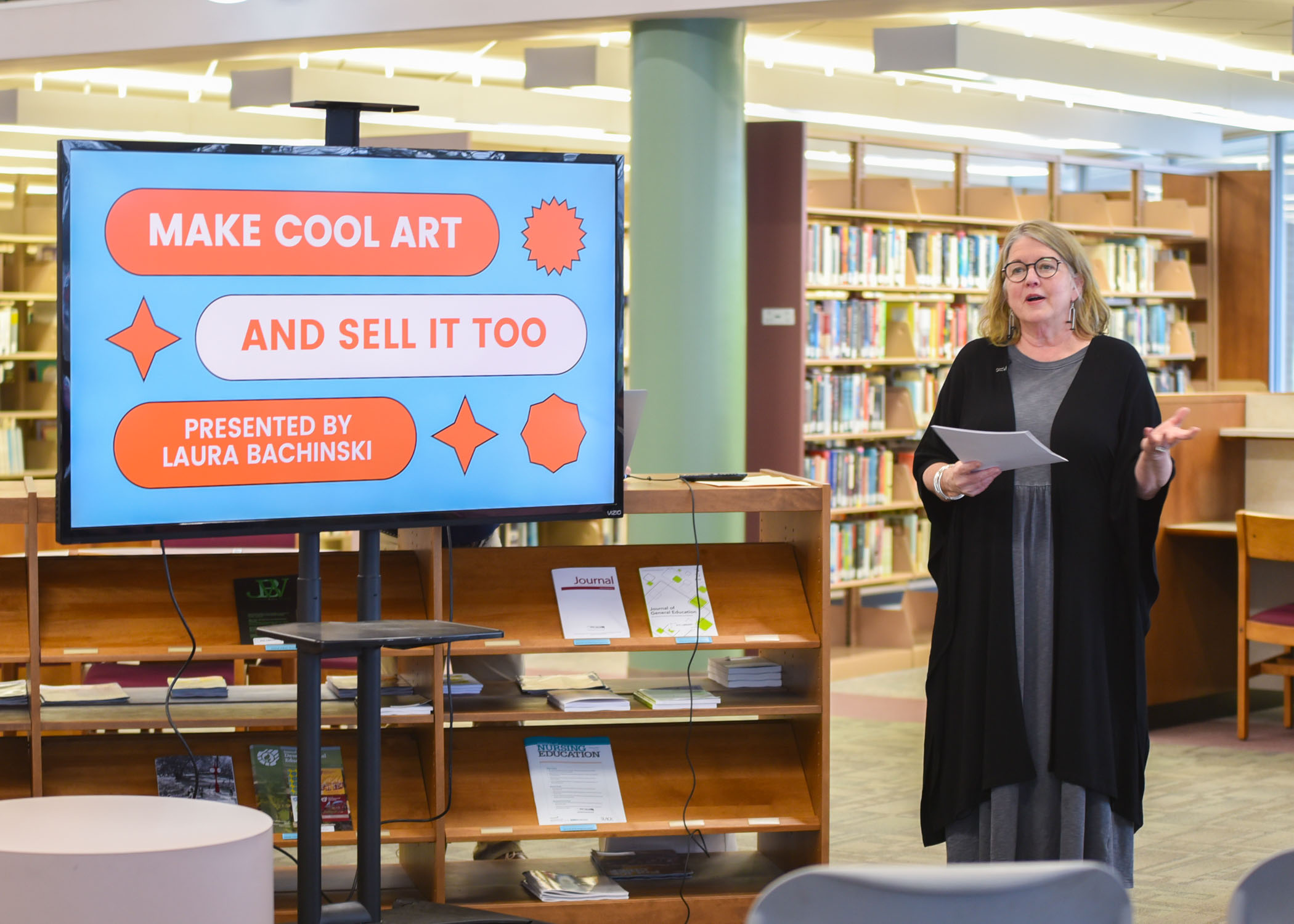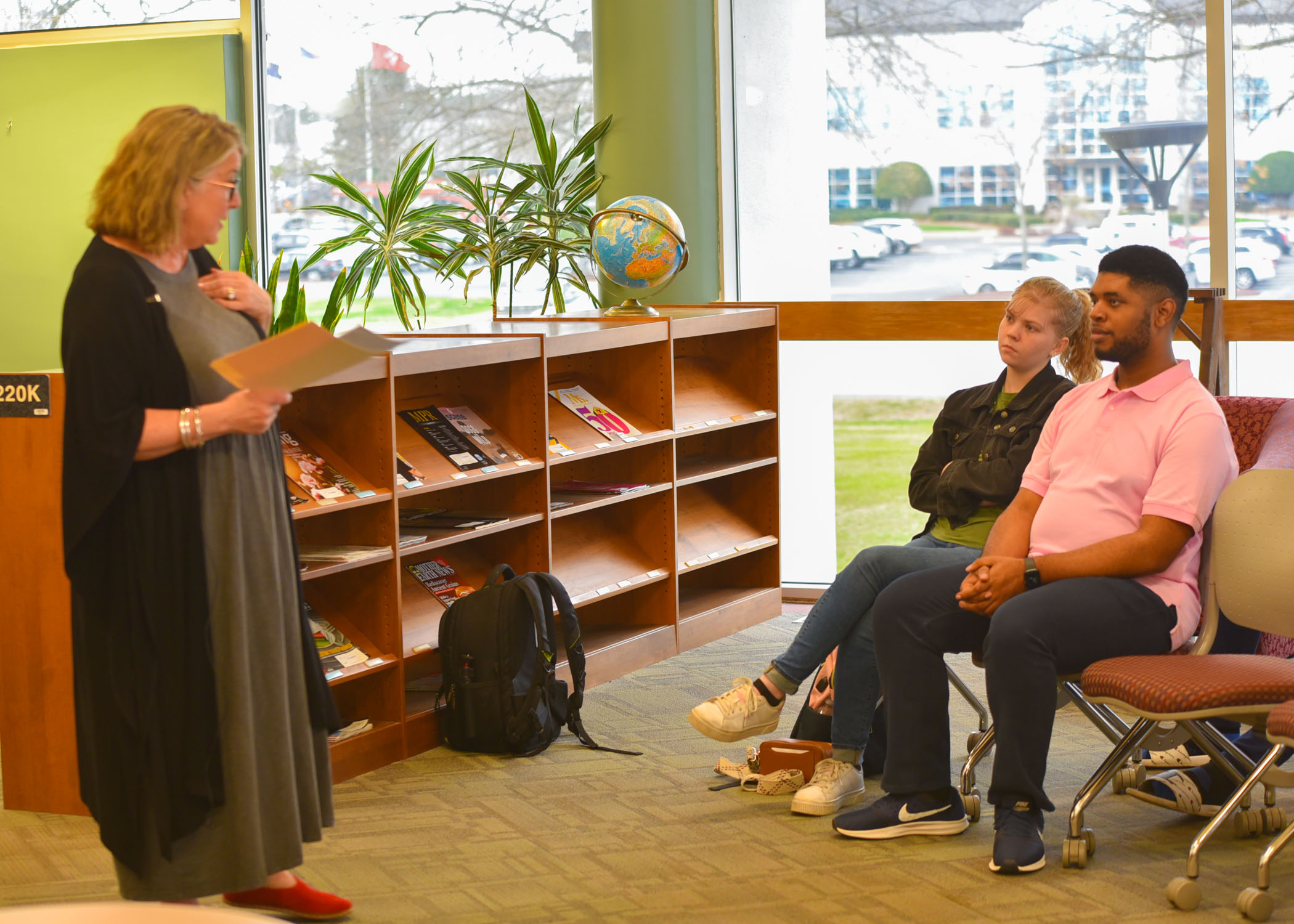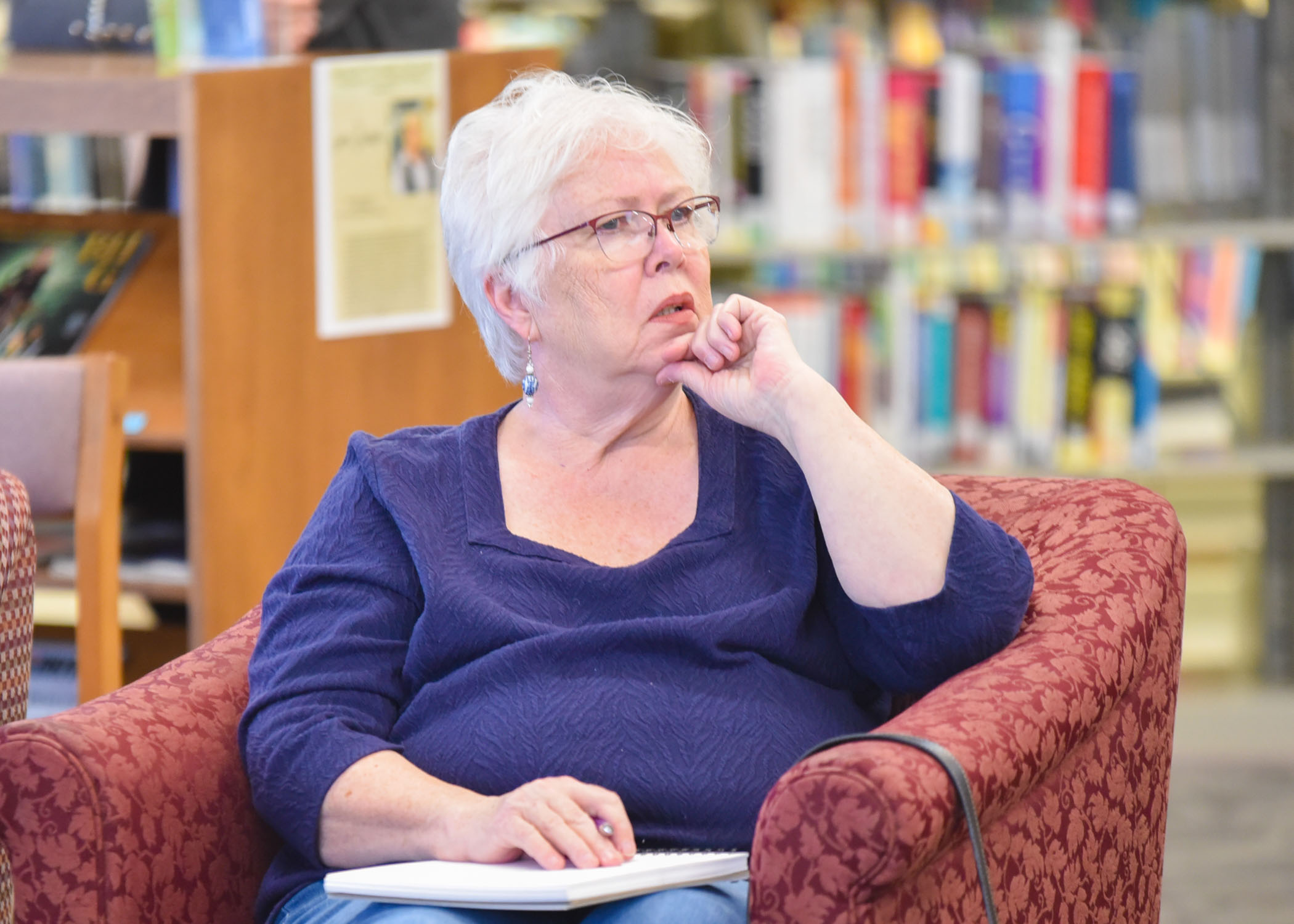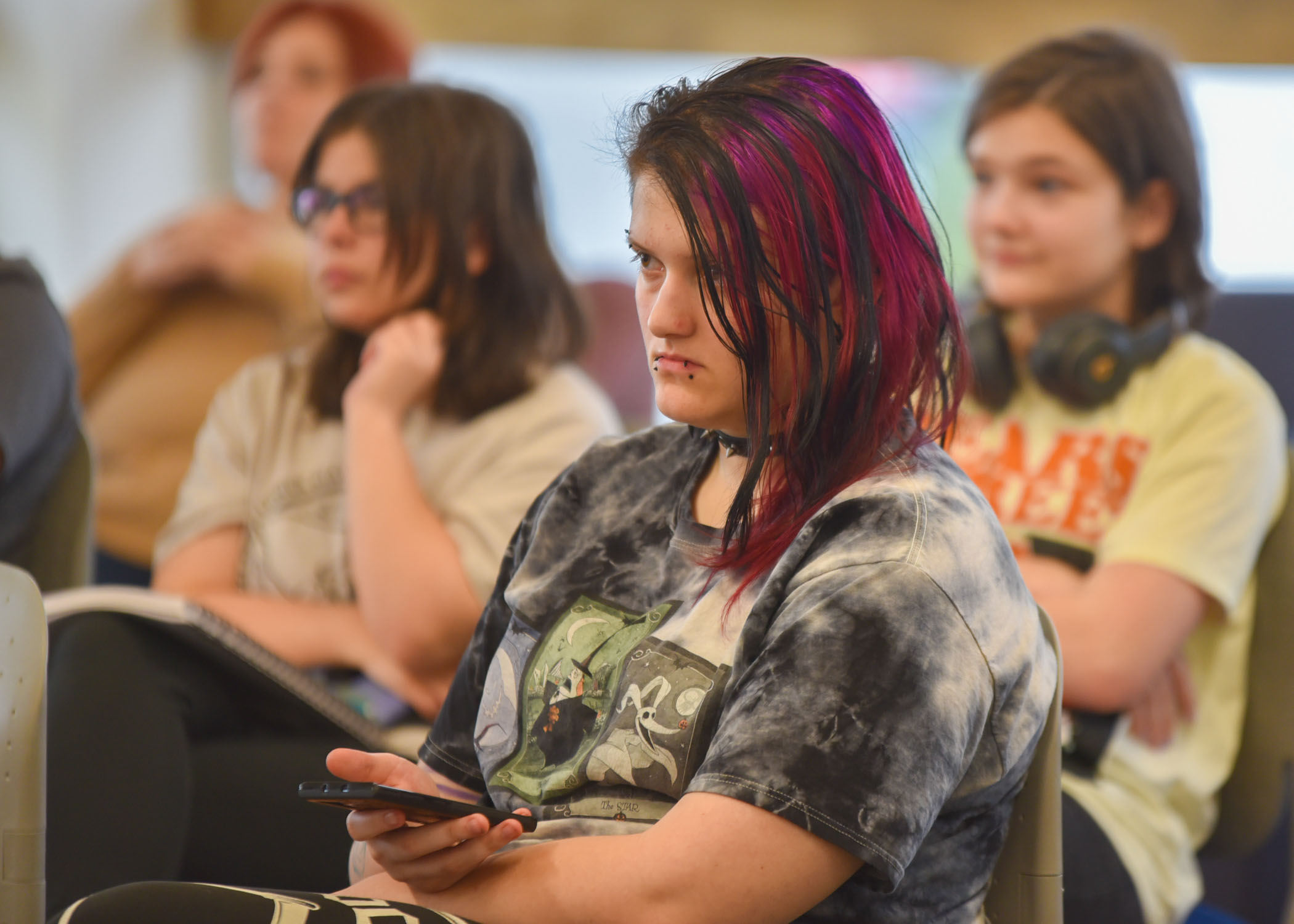Gallery Owner Offers Tips to Aspiring Artists at PTC
Judith Martin, the etiquette maven otherwise known as “Miss Manners,” would wholeheartedly approve some time-honored advice offered to commercial art students and others during a recent talk at Piedmont Technical College (PTC). Laura Bachinski, owner of Main & Maxwell gallery in Greenwood, was the February guest speaker in the college’s Visiting Artist Series, and she didn’t mince words.

“Make an appointment,” Bachinski said. In short, don’t ambush the gallery during business hours. Don’t have your grandmother show up unannounced with phone photos of her nephew’s amazing artwork and inquiring about representation. “Don’t put the gallery owner on the spot.”
It’s true that the social graces and “soft skills” are still important. If you do make an appointment, be on time and dress well. Be professional. While having a “work ethic” sounds drab in concept, it is imperative that aspiring independent art entrepreneurs consistently produce new work and maintain a healthy inventory.
“You have got to take time for it. Go to your studio and make stuff,” she said. “Get your hands dirty.”
Bachinski said aspiring artists also should buy and collect art; it doesn’t have to be the expensive kind, just works from all genres that bring inspiration. She encouraged students to be present and receptive to the art around them. It can inform and stimulate their work. It also can help them monitor or anticipate demand and price point on certain types of art.
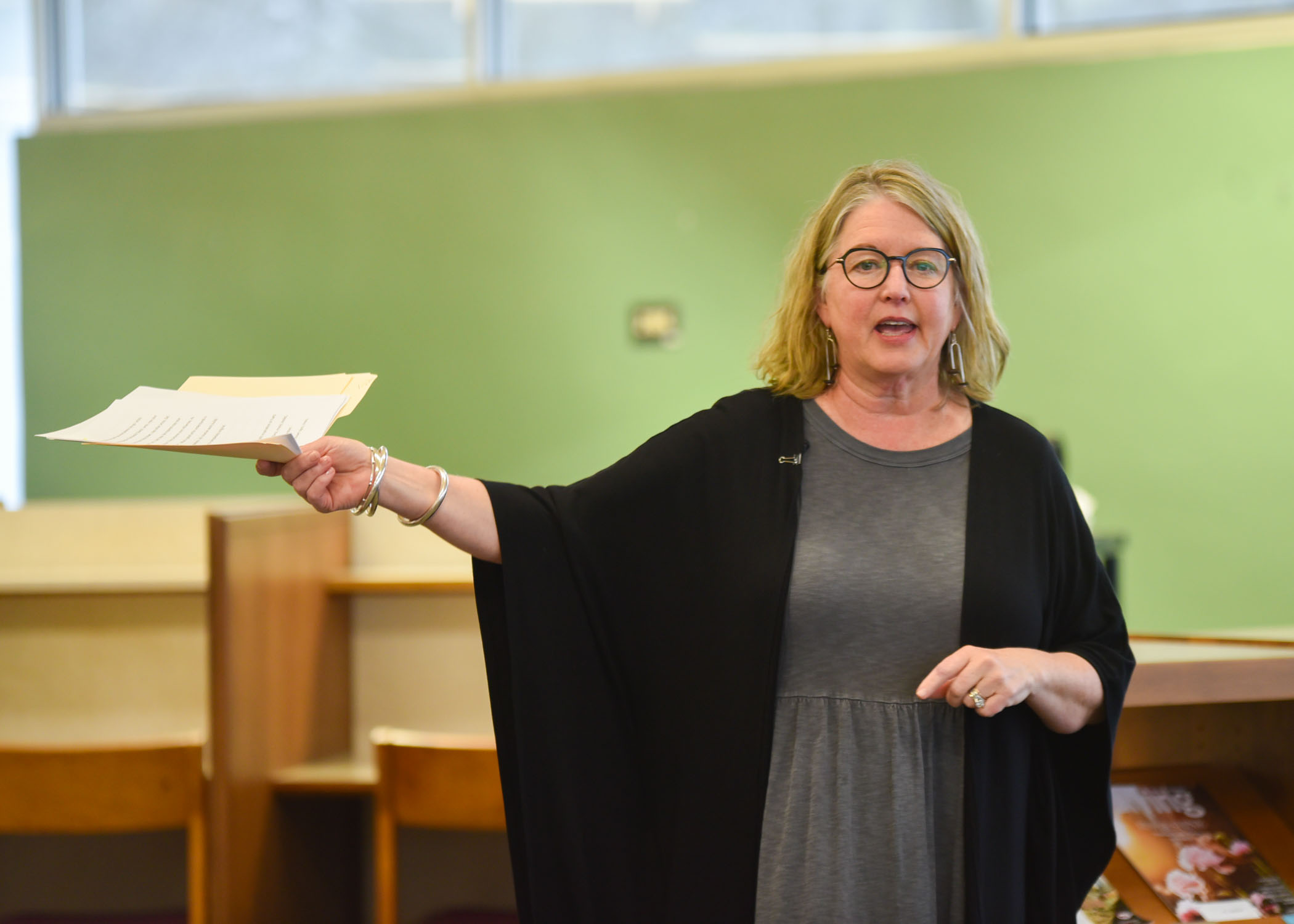
“There are so many places where you can learn. Go online. Watch YouTube videos. Take classes. Go to workshops. Go to museums,” she implored. “Take your sketchbook with you. ‘Copy’ other artists. To be clear, that does not mean plagiarize. Do not take someone’s work and say it is yours. But you should draw inspiration by copying their style and approach. All creative art builds on what has come before. … Select art that speaks directly to your soul and your work will be authentic.”
As enjoyable as the process of creating art may be, to successfully support oneself with it also requires practical marketing and business savvy. Professional artists must invest time and money on practical matters affecting their business. It is, after all, business.
“If you want to make a living with your art, you have to think about the selling part,” Bachinski said. “Know what you are selling and know who your audience is. Look to exhibit at juried shows. Know what is in demand right now.”
Those interested in representation must complete an application form. Most art galleries have artists they represent sign a non-compete clause, which dictates that the artist will not sell their work at a competing gallery in the same market.
“Don’t undercut,” she said. “The clause is there to protect you and the gallery.”
Bachinski told students that they know more than they think. Social media is a great promotional tool, but it’s important to consider and reach all audiences, including older people who may be in a better position to purchase fine art. While many younger social media users have moved on to other platforms, older users are still on Facebook, so don’t forget about Facebook.

While artists often receive unconditional praise of their work from family and close friends, Bachinski insisted it is important to seek input and constructive feedback from experienced, unbiased professionals.
“Be willing to listen to the truth,” she said. “Don’t get mad. Don’t be hurt. Listen to the criticism again and again. Take that information and do something with it.”
For more information about PTC’s Commercial Art Program or its Visiting Artist Series, go to www.ptc.edu/commercialart or contact Program Director Kendall Adams at adams.k@ptc.edu.
